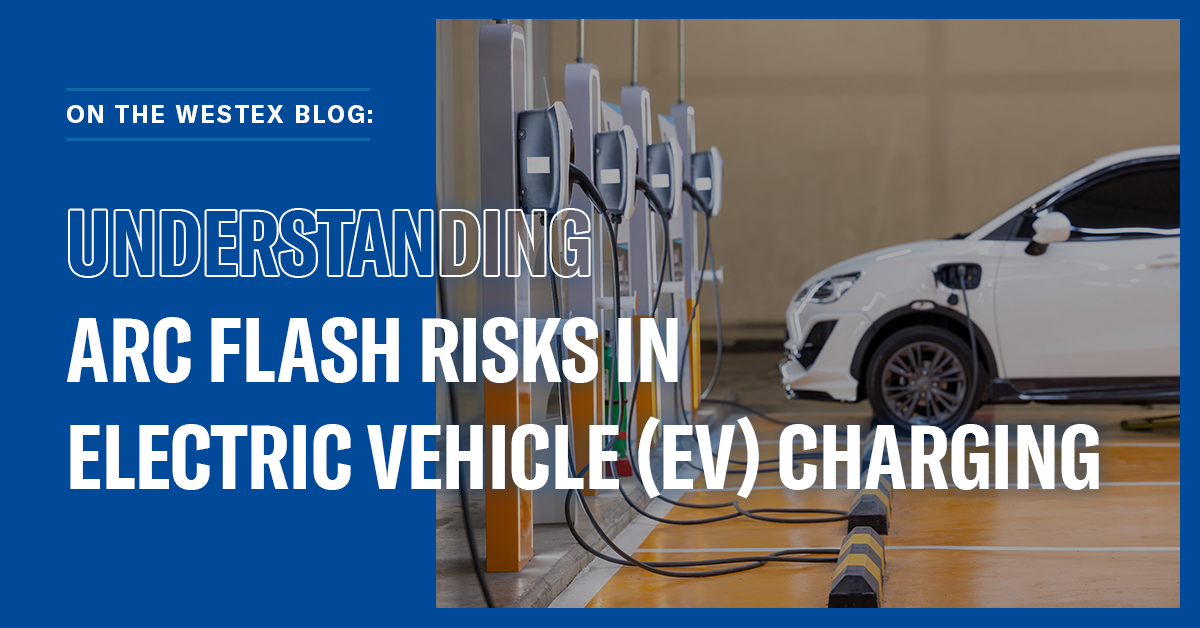
Understanding Arc Flash Risks in Electric Vehicle (EV) Charging
15 Oct 2024
Electric vehicles (EVs) are revolutionizing transportation, but with this innovation comes new safety challenges – especially for professionals installing vehicle charging stations. One critical issue is the potential for arc flash during EV charging. We connected with Scott Margolin, vice president of corporate strategy and technology at Tyndale, to explore these challenges in depth.
Is there a potential for arc flash with EVs?
Absolutely. There is a potential for arc flash in both the EV itself and the EV charger. The chargers—whether small ones in garages, larger ones at gas stations, or even bigger ones at ports—all have an arc flash potential. This risk is complicated by the different types of currents involved: AC (alternating current) and DC (direct current), depending on the charger’s configuration.
What causes an arc flash?
The causes of arc flash in DC charging are similar to those in other systems. Mechanical failure, defective equipment, improper maintenance, and human error are the main culprits. For instance, using an inadequate voltage meter can cause an arc flash. Additionally, there’s a significant issue with under- or mis-reporting arc flashes, as incidents often get labeled as explosions or fires instead.
Are there risks with the EV itself?
While the risk of arc flash within the EV is less common, thermal runaway, otherwise known as an uncontrollable fire, in the battery is a significant concern. During maintenance, de-energizing the EV battery poses risks like an arc flash, and this process requires careful handling. This industry is still very new, and we’re all still figuring out all the risks.
What are the differences between AC and DC arc flashes?
Tyndale has begun qualitative research on the differences between AC and DC arc flashes, but the science around the difference between AC and DC arc flashes is still developing. DC arcs, being Direct Current, are “on” during the whole arc, while AC arcs, being Alternating Current, cycle “on” and “off”. We have terrific slow motion video clearly showing this key difference in split screen.
Early research indicates that the protective ability on personal protective equipment (PPE) is not significantly different between AC and DC arc flashes.
Tyndale and Kinetrics have teamed up to gather quantitative data to support this research, but we quickly realized the scope of this project exceeded our capabilities. We’ve recruited a few other companies to partner with, and over the course of 2024 we hope to come to some solid conclusions around arc ratings in DC vs AC.
Are there different requirements for AC vs. DC arc flash PPE?
Currently, there’s no standard or OSHA requirement for different PPE for AC versus DC arc flashes. Our preliminary qualitative research suggests that garments rated for AC arc flashes perform similarly under DC conditions.
During testing, the garments didn’t appear more damaged from an AC or DC arc flash. We need more quantitative research to confirm these findings, but existing arc-rated clothing does provide protection against DC arc flashes.
Recommended Fabrics for Arc Flash Protection
It’s essential to wear fabrics rated for the specific arc hazard. Lightweight, moisture-wicking, and inherently flame-resistant fabrics, like Westex® DH Air™, can be particularly suitable for environments where comfort is crucial, such as outdoor or high-heat settings.
As the EV industry grows, so does the importance of understanding and mitigating arc flash risks. Ensuring proper maintenance, using appropriate PPE, and staying informed about the latest research are crucial steps for safety. Click here for additional resources on determining the correct fabric for industry standards and hazards.

